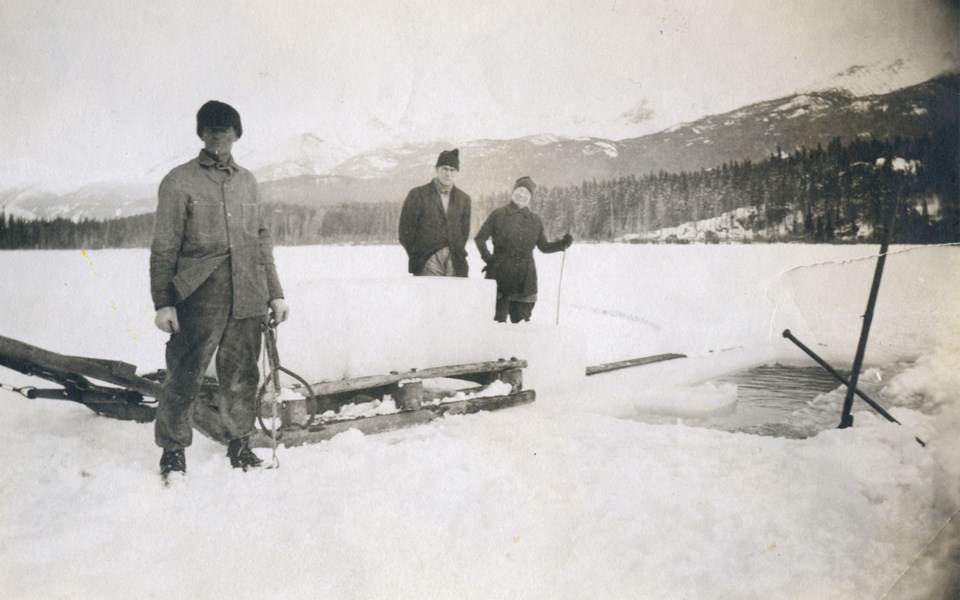Unsurprisingly, the sub-zero temperatures and arctic winds have left the museum feeling a bit chilly. Rather than dream of warmer climes, this weather has inspired me to look back at photos of winters from Alta Lake's past.
Some photos in the Philip Collection were donated to the archives with notes on the back detailing who is in the image and what they are doing. A few of these photos (such as the one above) portray an activity that you would be surprised to see happening on Alta Lake today: an ice harvest.
Before hydro lines came to the valley (and then for an additional few years before that power could be accessed) most residents kept food from spoiling using cellars dug into the ground or ice houses.
Ice houses were double-walled structures that were tightly insulated and packed with sawdust. Once filled with blocks of ice, these houses could keep food from spoiling through the hot summer months. Places such as Rainbow Lodge cut blocks of ice out of Alta Lake in February, when the ice was usually thickest. As Myrtle Philip noted on the back of one photo, "They cut the ice with an ice saw ... like a big crosscut saw." The ice was then dragged to the ice house on a sled, by person or by horse.
The ice harvest on Alta Lake could be a social event for those spending the long winter in the valley. William MacDermott, also known around Alta Lake as "Mac," had his own ice house and once his harvest was done those who helped harvest gathered in his cottage to celebrate with jugs of Mac's homebrew brought out from under the floorboards.
Winter tales from Rainbow Lodge often seem to end in a celebratory drink.
In an audio recording Myrtle relates the story of a railway crew she accompanied through the snow from Rainbow Lodge to the Cheakamus Canyon around 1913 or 1914. The crew arrived at Rainbow Lodge to rest for a couple days after walking from Pemberton on wooden skis. Myrtle fed them pea soup and baked beans and then accompanied them to a camp somewhere between Alta Lake and Squamish. At the camp the group waited for an older and exhausted engineer to catch up. He arrived two hours later, saying, "I'm all through boys, I can't go any further. I'm going to lie right here and die. I've had it."
From the camp they were able to call for an engine and caboose to come from Squamish. The crew met the train almost 10-kilometres south of the camp; it had run into the snow at the end of a bridge over the Cheakamus River and could go no further. It was here that they, like the ice harvesters, were rewarded with a drink.
As Myrtle described it: "I'll never forget the bucket of tea they had sitting on the stove. A big ten quart bucket and it was full of boiling water and a man came in and poured practically a pound of tea in that pail wanting to give us a nice warm cup of tea, it could have pretty well stunned a horse it was so strong!"
Though some drank homebrew while others had tea, in the early winters of Alta Lake everyone seemed to welcome a chance to get warm after being out in the snow.




